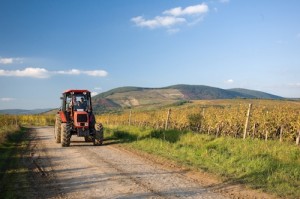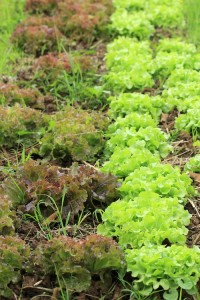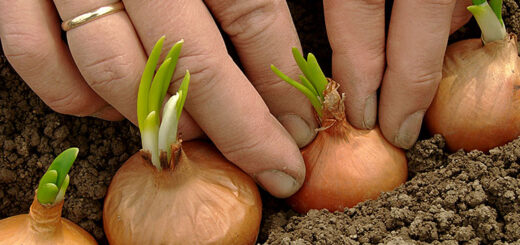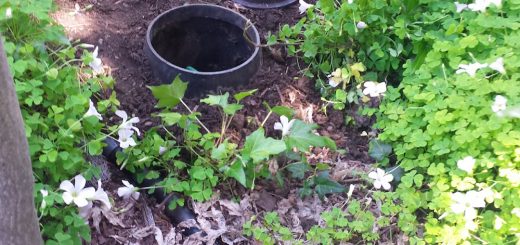Winter Gardening on the Central Coast
Here on California’s Central Coast, with our mild climate, we can grow a variety of vegetables well into the winter. Various kinds of winter squashes and pumpkins are ideal to plant later in the season and harvest during the late fall and winter. Beets and carrots are two root crops that do well in winter. Vegetables that mature quickly like turnips are okay to plant in the fall. Arugula and spinach are also great greens to plant in cooler months for an early winter harvest.
Artichokes are an interesting crop to grow and you can plant them in late fall. They are also one of the most prolifically grown vegetables in our area. Plant artichokes from root stock and you should be able to harvest by early spring. Artichoke plants grow quite tall so make sure when you plant your artichoke it has plenty of room surrounding it. When the artichokes have stopped appearing and the plant starts dying off, cut it back and it will come back next season!
Onions and other bulb vegetables such as garlic are a good choice for late summer and early fall planting. The size of an onion depends a lot on how much sunlight it gets. Garlic is easy to grow and produces numerous bulbs after a long growing season. It is frost tolerant. Beyond its intense flavor and culinary uses, “the stinking rose” is good in the garden as an insect repellent and has been used for centuries as a home remedy. Green onions that don’t need to develop bulbs are a good pick to plant all year long as long as the temperatures don’t reach freezing.
If you grow herbs in your garden, you can move many of them indoors and enjoy them throughout the winter. This is especially easy to do if you grow them in containers. Perennial herbs like lavender and rosemary are excellent to grow in the winter garden outdoors. They will both survive frost and rosemary is considered an evergreen shrub.
You’ll probably need m uch less space for your winter garden than for your summer garden, since winter vegetables are more compact than spring and summer vegetables. Raised beds work well as you can organize them by type of vegetable and the insect population is easier to control. For instance, one bed can be root crops such as beets, onions, and carrots. Another can be cabbage types, such as broccoli, kale, and cauliflower. And a third can be chards and lettuces.
uch less space for your winter garden than for your summer garden, since winter vegetables are more compact than spring and summer vegetables. Raised beds work well as you can organize them by type of vegetable and the insect population is easier to control. For instance, one bed can be root crops such as beets, onions, and carrots. Another can be cabbage types, such as broccoli, kale, and cauliflower. And a third can be chards and lettuces.
Late fall and winter is an important time for properly storing your fall vegetable harvest. Store your winter vegetables in a cool, dry place. A basement is ideal. When you store them, spread them out so they do not touch each other. If they are bunched up in a basket of bucket decay will set in and you could lose the whole batch. Unfortunately, decay can still set in so it is important to check them
One of the benefits of winter gardening is there is less work and less damage from pests and insects. But watch out for two winter pests: Slugs and Aphids.
Slugs are active in cool wet weather and especially at night. They are especially a problem for young seedlings. During the coldest months of winter slugs hibernate in the topsoil, but before they hibernate, they can do lots of damage. There are a number of methods to control them such as hand picking which is best done in the evening, eliminating hiding places, trapping them with a shallow pan of beer, placing a barrier of copper tape around your raised bed, or importing ducks or chickens to enjoy a big dinner. All of these methods work well but the one you choose depends on the area in which you live. Ducks and chickens are great in a rural area but not in a suburban neighborhood. A shallow pan of beer works well but not if you dog is going to come over and slurp it all up!
Another problem pest is the Aphid that sometimes attacks broccoli and cauliflower. Usually it is only one or two plants and sometimes only one or two leaves. If you  find aphids on a leaf and the plant has lots of healthy leaves to spare, cut it off and throw it away. If aphids gather on the edible portion of the plant or the center of the plant where the broccoli floret will eventually grow, spray them with an insecticidal soap, such as Safer Soap. It only kills the aphids that are present and not the eggs so repeat the application once a week. Spraying the plants with the hose a couple of times a week is also effective as it knocks the aphids off the plant.
find aphids on a leaf and the plant has lots of healthy leaves to spare, cut it off and throw it away. If aphids gather on the edible portion of the plant or the center of the plant where the broccoli floret will eventually grow, spray them with an insecticidal soap, such as Safer Soap. It only kills the aphids that are present and not the eggs so repeat the application once a week. Spraying the plants with the hose a couple of times a week is also effective as it knocks the aphids off the plant.
Controlling the three pests above is not difficult and helps my vegetable plants produce winter meals for months. We are fortunate to live in an area where cool season vegetables thrive. My Montana friends and family who follow this column would love to have our weather, so I hope you realize how fortunate we are in Benicia and start your cool season vegetables soon.
When to Plant your Winter Vegetables
Beets ————- Anytime
Broccoli ———- Fall to early spring
Brussels sprouts — Fall to early spring
Cabbage ———– Fall to early spring
Carrots ———– Anytime
Cauliflower ——- Fall to early spring
Chard ————- Fall to early spring
Kohlrabi ———- Fall and winter
Lettuce ———– Fall to spring
Onions ———— Fall and winter
Spinach ———– Fall to early spring
Turnips ———– Fall to early spring







